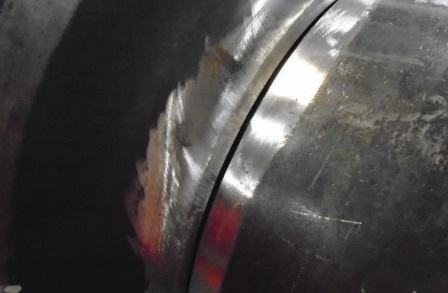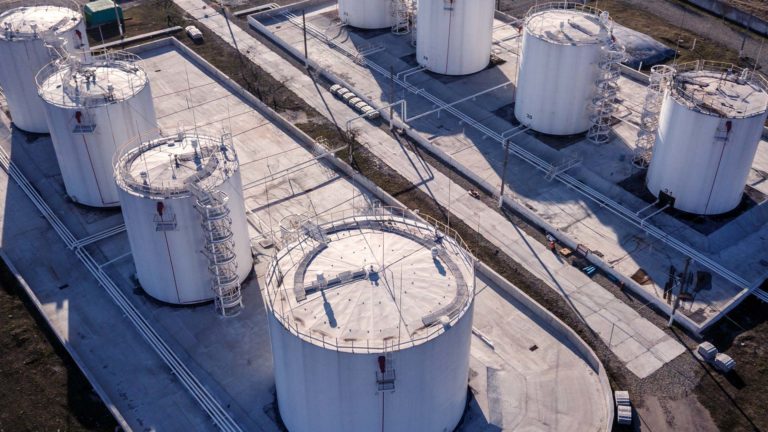Understanding the Key Steps in Tank Welding Inspection Procedures
Understanding the Key Steps in Tank Welding Inspection Procedures
Blog Article
The Essential Role of Tank Welding Examination in Ensuring Structural Stability and Safety Conformity in Industrial Applications
In the world of industrial applications, container welding evaluation emerges as an essential aspect in guarding structural honesty and ensuring conformity with safety and security laws. Making use of a mix of methods such as aesthetic analyses and progressed testing approaches, these evaluations offer to recognize and mitigate prospective imperfections before they rise right into considerable dangers.
Importance of Container Welding Inspection

Making certain conformity with industry requirements and regulations is one more substantial aspect of storage tank welding evaluation. Regulative bodies mandate stringent standards for the building and maintenance of tank, and thorough evaluations aid companies abide by these requirements. Non-compliance can lead to extreme penalties, consisting of penalties and closures, further stressing the demand for strenuous assessment procedures.
Furthermore, tank welding evaluation plays an important function in maintaining operational efficiency. In summary, the value of tank welding examination lies in its capacity to safeguard public health and wellness, protect the setting, and guarantee compliance with governing frameworks.
Key Inspection Techniques
Efficient tank welding examination depends on a variety of vital methods that ensure complete evaluation of weld quality and architectural stability. Among the most common methods are visual inspection, ultrasonic testing, radiographic screening, and magnetic bit testing - Tank Welding Inspection. Each method offers special benefits in examining different elements of the weld
Visual evaluation acts as the first line of defense, allowing inspectors to recognize surface flaws, irregularities, or inconsistencies in the weld bead. Ultrasonic testing utilizes high-frequency acoustic waves to spot internal flaws, such as cracks or voids, offering a comprehensive evaluation of weld integrity. This technique is especially reliable in discovering concerns that may not be noticeable externally.
Radiographic testing utilizes X-rays or gamma rays to produce images of the welds, exposing internal interruptions and offering a long-term document for future referral. This technique is extremely reliable for important applications where the danger of failing must be lessened.
Finally, magnetic particle testing is utilized to determine surface area and near-surface flaws in ferromagnetic products. By using magnetic areas and great iron bits, inspectors can identify interruptions that may endanger the architectural honesty of the tank. With each other, these techniques form a robust structure for ensuring top notch welds in industrial applications.
Compliance With Safety Requirements

Normal inspections play a critical function in making sure conformity by determining possible failures or variances from recommended requirements. Inspectors are educated to assess weld top quality, confirm material requirements, and evaluate the total architectural stability of tanks. Their experience is vital in guaranteeing that welding procedures fulfill the needed safety and security requirements.
Moreover, conformity with security criteria not only secures workers but additionally safeguards the atmosphere from potential dangers such as leakages or devastating failures. Organizations that focus on security conformity are better placed to alleviate dangers, improve functional performance, and cultivate a society of security within their workforce. In summary, maintaining strenuous conformity with security standards is essential for the effective operation of container welding activities in industrial settings.
Benefits of Regular Assessments
Routine examinations are essential to keeping the architectural integrity and security of welded tanks. These assessments supply an organized strategy to identifying prospective issues or weak points in the welds, making certain that any concerns are resolved prior to they escalate into substantial failures. By carrying out regular analyses, companies can identify deterioration, fatigue, and other forms of damage that may jeopardize tank performance.
Additionally, regular inspections contribute to compliance with industry regulations and criteria. Complying with these standards not only reduces legal threats however also enhances the company's credibility for safety and security and dependability. Normal inspections cultivate a proactive security society, urging workers to identify and focus on the value of devices integrity.

Situation Studies and Real-World Applications
Case studies and real-world applications highlight the concrete effect of effective container welding examination techniques. Following the execution of extensive welding evaluation procedures, consisting of aesthetic and ultrasonic screening, the facility determined crucial defects in weld seams that can have led to catastrophic failures.
In a similar way, a water treatment plant executed an extensive evaluation program for its storage tank welding procedures - Tank Welding Inspection. By including non-destructive testing methods, the plant had the ability to spot very early indications of deterioration and fatigue in weld joints. This prompt intervention expanded the lifespan of the storage tanks and made sure conformity with Full Report safety laws, therefore safeguarding public wellness
These study underscore the value of normal and methodical storage tank welding assessments. By focusing on these methods, markets can alleviate dangers, improve structural honesty, and make certain compliance with safety and security criteria, inevitably bring about boosted functional efficiency and reduced obligations.

Conclusion
In conclusion, storage tank welding assessment is a vital part of maintaining architectural integrity and safety in commercial applications. Employing various inspection techniques makes certain early discovery of possible defects, therefore avoiding tragic failures.
Report this page